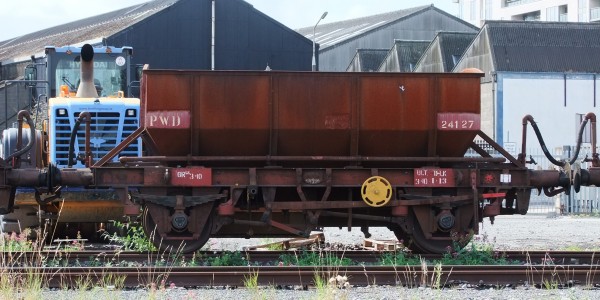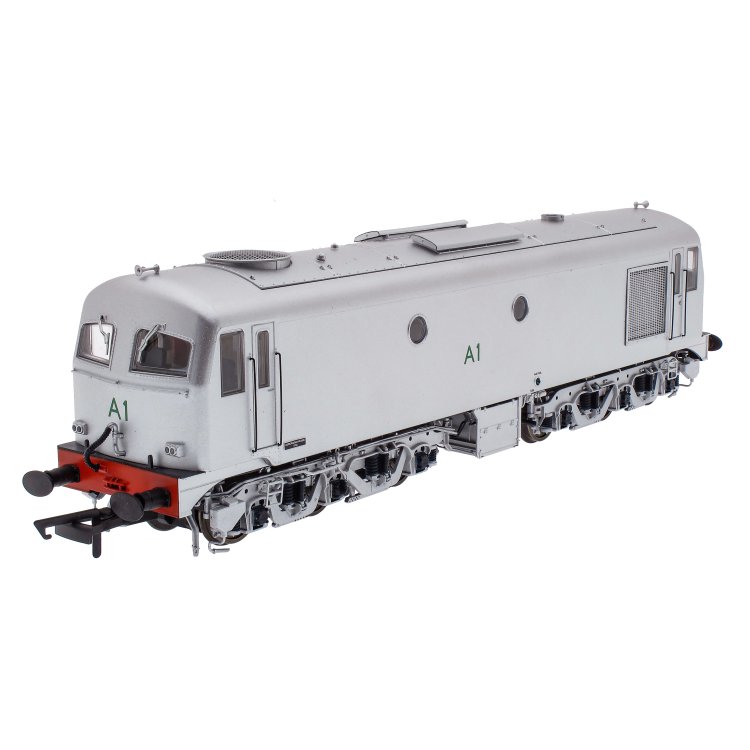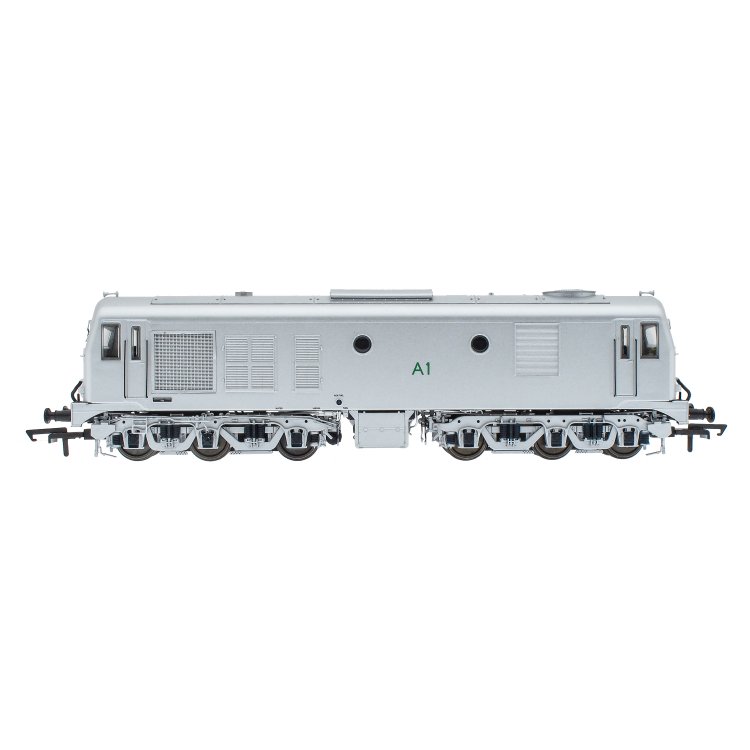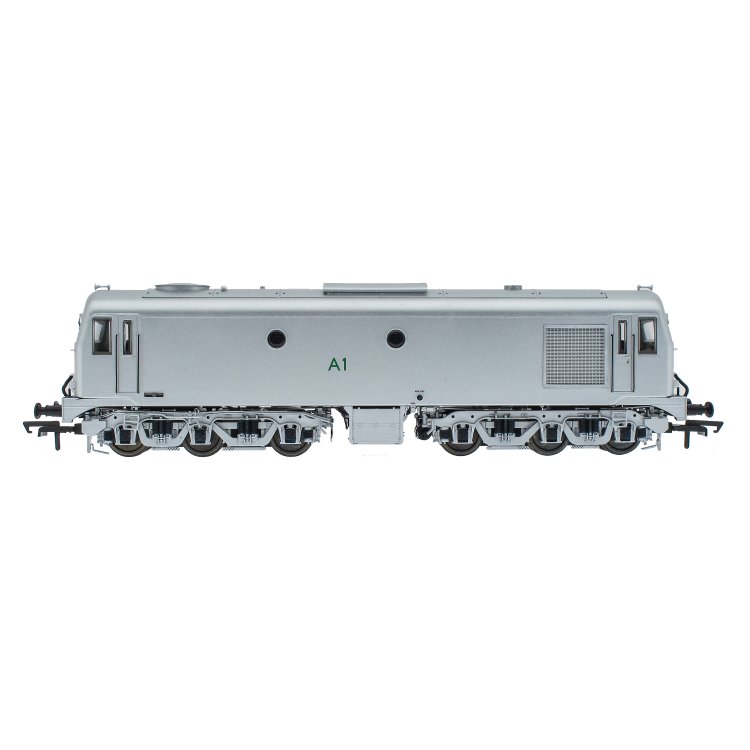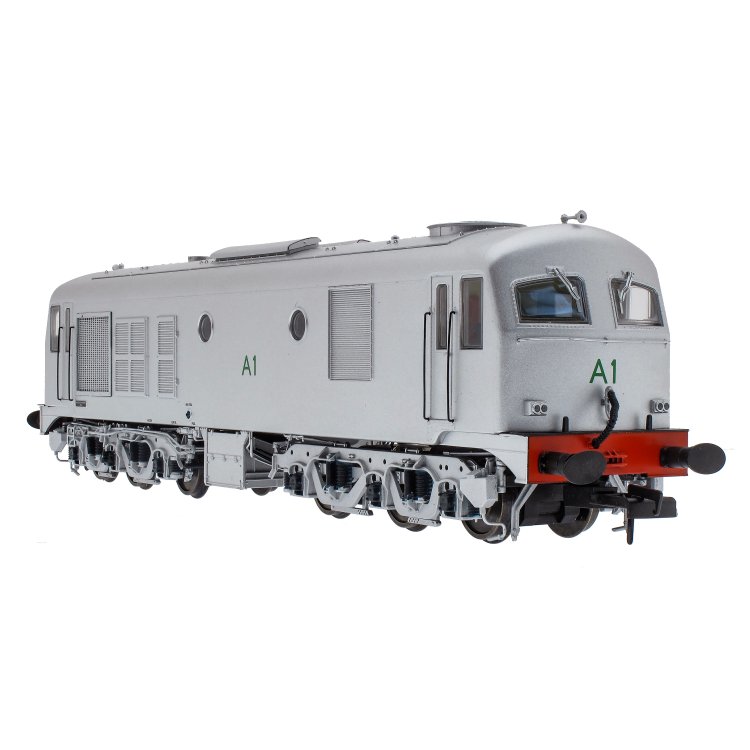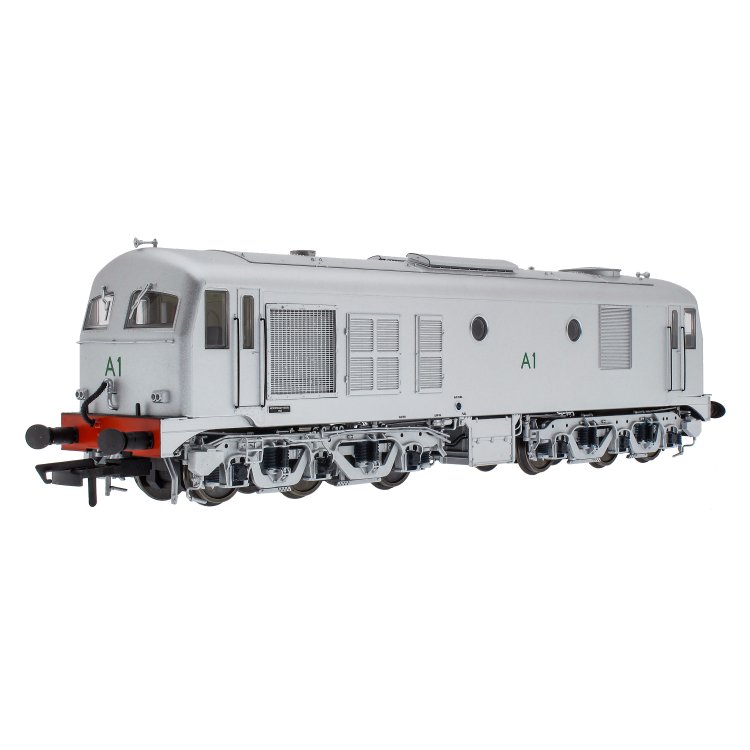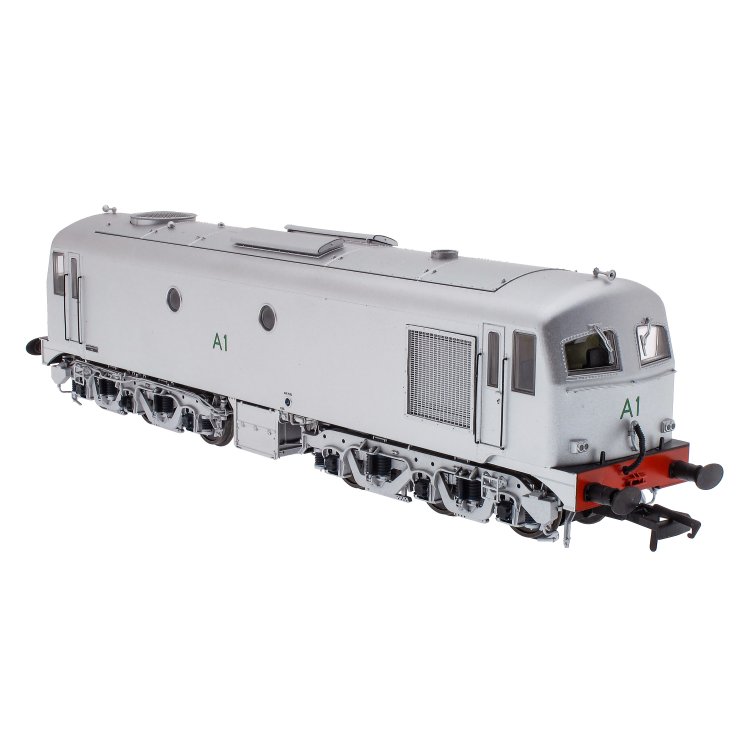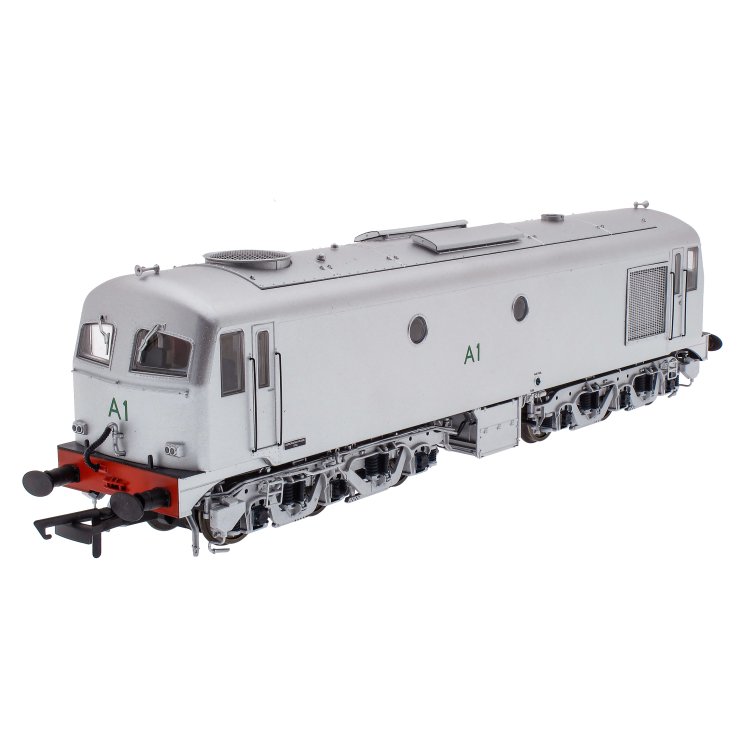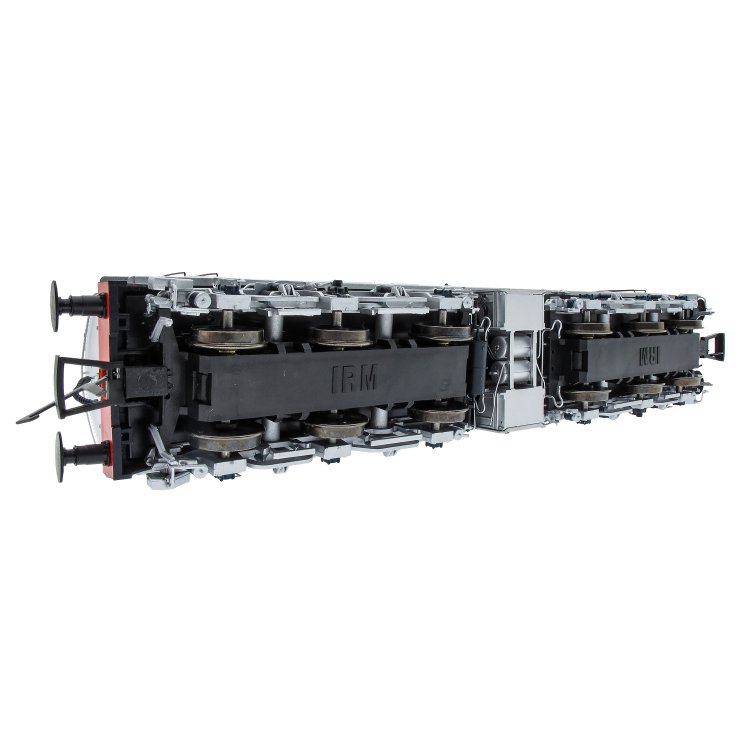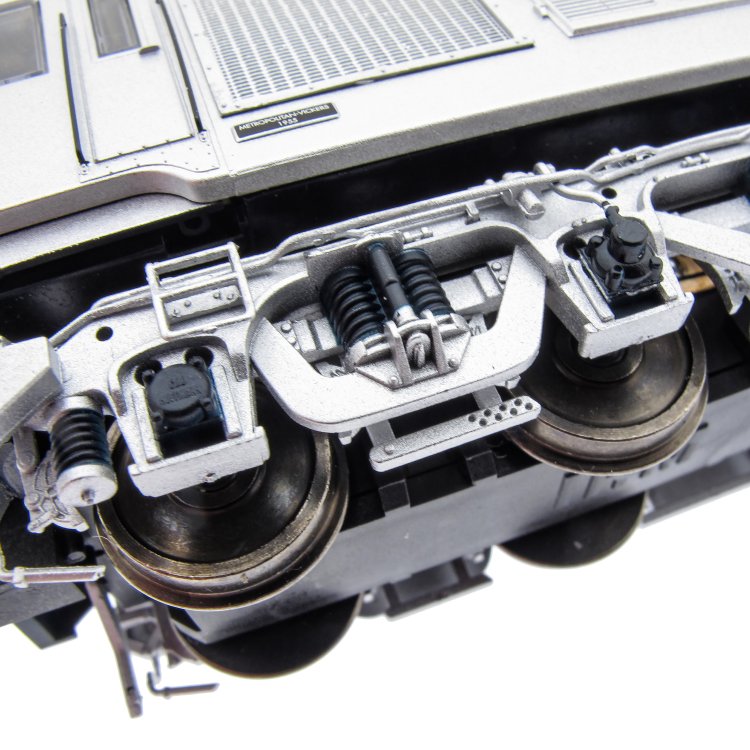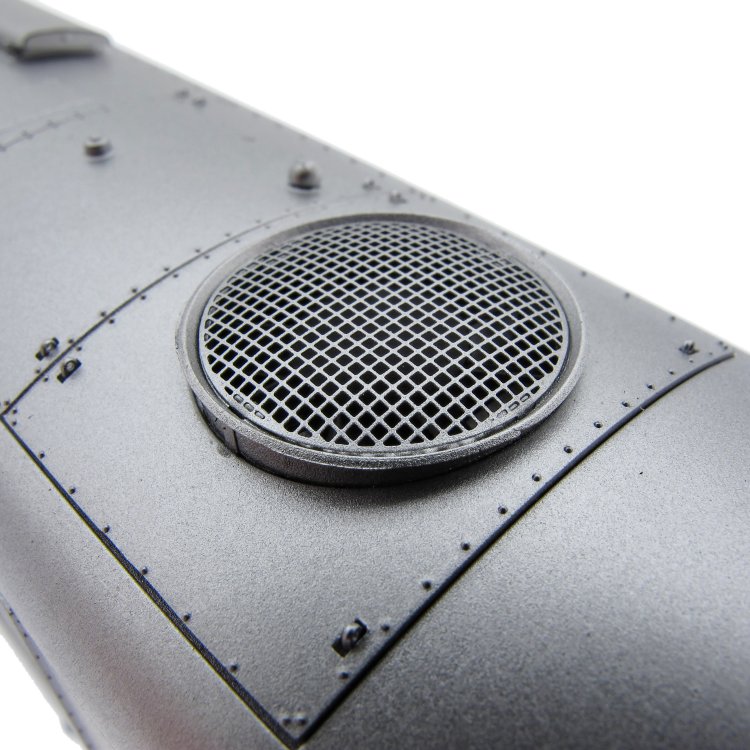-
Posts
8,838 -
Joined
-
Days Won
2
Content Type
Profiles
Forums
Resource Library
Events
Gallery
Blogs
Store
Community Map
Everything posted by BosKonay
-
Earlier this year we announced an all new range of nuclear container packs for our humble PFA four wheeled flat wagon. At the time, and due to a large demand from our customers, we also hinted at a new run of some of our previous container loads. Well, here they are! Our coal and low level nuclear waste container wagons are back with all new numbers and identities! These distinctive wagons debuted in the mid 1980s in the iconic and attractive Cawoods Coal livery, bringing domestic coal to ports for export. Running in long block trains behind classic traction such as Class 37s and 56s, they made for an attractive and different sight on the network. Following on from the previous two runs of this livery, we are now offering two new packs of three wagons featuring all new numbers. Perfect for building a rake or complimenting an existing train, the Cawoods wagons really do not hang around for long in stock. In the mid 1990s. Cawoods yellow was swapped for British Fuels red. Another attractive livery with white branding was born and we are now adding an all new pack to the four packs we released in the first run of these pretty wagons. Once again all new numbers are available and are perfect for enterprise workings as well as long block trains, giving modellers a perfect variety in their stock. Finally, the low level nuclear waste of the DRS era has probably been our best selling wagon combination, ever! Our previous run of these wagons sold out within 10 days of arrival, so we have now brought it back to satisfy demand with new artwork. Sure to be another favourite among modellers once again, they match perfectly with our new nuclear loads and of course our monster KUAs and forthcoming Class 37s in DRS livery. Delivery of these wagons will be with our new nuclear container PFAs in Q4 2021 and are priced at £74.95 per three pack. If you buy any two packs or more you will get an automatic 10% discount at the checkout too, and this includes mixing them with the other PFA packs available to pre-order, offering further value! Order yours at you local stockist, or direct right here. View the full article
-
-
Looks like the cloud move undid some of the memory limits. Will fix! Thanks
-
What format, file size and dimensions are the images?
-
Our latest announcement sees us returning to an old favourite long since unavailable and something that was subject to high demand last time out; the Castle Cement PCA wagons. The first run of these wagons sold out in super quick time, and there has been demand for these wagons ever since. We are also offering them in original Castle Cement livery too for the first time! All wagons were re-liveried in Castle Cement livery in 1996 for use on workings to London – initially to Kings Cross freight depot and then to the freight facility at Saint Pancras from 2003. Since 2013, a number of these wagons have also been used on workings between Clitheroe and Avonmouth which they serve on to this day. Transition from original to revised Castle Cement livery took place in the early 2000s and have since featured a variety of branding variations which our models faithfully capture. As you can see, the decoration artwork for this new run of wagons is complete and we are due samples soon. The modern Castle Cement liveried wagons features all new running numbers from the first run too, so perfect for complimenting existing wagon packs! Delivery is slated for Q4 2021 and packs are priced at £74.95 each, with 10% off when you buy two or more packs (automatically added at the checkout!) Demand is expected to be high for this production run, so pre-ordering with your local stockist or direct is advised. You can pre-order direct right here: https://accurascale.co.uk/collections/pca-bulk-cement-wagon View the full article
-
Can buy a nice A class for €189 and more to come... When the 141/181/071's were made, the market was much smaller - we reckon about half the numbers it has now... supply and demand unfortunately kicks in.
-
Maybe try the classifieds
-
I'm not seeing any pending Ads BTB, but as the site was moving between servers for the last few hours, there is a chance you added it to the old server, and it's not on the new one
-
I had to flip the server to another set of virtual machines, tho the 'gap' where DNS was updating would have been of the order of between 2 and 30 minutes...
-
Eventually
-
A few weeks ago we sent out an email advising on the production progress of the A Class, which as made great strides in recent months. After a long slog of research, design, tooling, testing, tooling correction and decoration creation and correction, we are now finally in the latter stages of production before delivery. Of course, at each stage of the process there are always little factors that can trip you up, often outside our control, and a couple have surfaced since we last updated you. Once such area was some of the tampo printing, which we were not fully happy with, particularly with their clarity and crispness. We have instructed the factory to go back and correct these issues which they are currently doing. Perhaps we're a bit too perfectionist at times, but we want these looking the very best and accurate that they can be. Secondly, in the wake of the blockage of the Suez Canal by the "Ever Given" container ship last month, there is now a shortage of shipping containers in China, which will cause delays in shipping out any goods from the Far East right now. We have been advised by our shipping partner that normality in this regard will take 6-8 weeks to be restored. So, what does this mean for the As? We had hoped to have these delivered to Dublin by late May/early June, but with these hiccups we now envisage delivery of late July. We are very sorry for this delay, but between demands for better quality, finish and shipping delays we hope you can understand the reason for this slight delay. We thank you for your patience and assure you that they will be worth this additional blip. With A23r already sold out and others not too far behind the demand for these beauties is very strong indeed. Order yours by clicking here! View the full article
-
and in one piece too
-
You can buy from the accurascale site at the moment and fulfillment will take place from Dublin...
-
Thanks Bob! just wait until we turn to Irish steam!
-
We announced our first steam locomotive project, the GWR 78xx Manor Class 4-6-0 tender locomotives, back in early February and showed an early test shot of the completed tooling. Since that announcement we have made further progress, and can now show off a fully tooled sample with detail parts and etchings in place. Please note that this is a first casting from our tooling. There will be further refinements to plastic, die cast and etched parts, as well as tweaks to the tooling based on this first sample. However, we think you will agree that it is shaping up quite nicely indeed. As you can see, much use has been made of diecasting to ensure we pack as much weight as possible into the locomotive to aid traction as well as smooth and reliable running. High fidelity etched and plastic components add that extra finesse to elevate this model to the next level, giving our Manor a quality and robust feel. Of course, the first sample is a process of evaluating and assessing the tooling, and looking at what improvements can be made to the design. We have also listened to feedback from modellers, and along with our own improvements will be implementing as many of these upgrades as possible. This will include alternative driving wheels with no webbed areas opposite the balance weights and an alternative "1952" style firebox washout plug arrangement. We're also aiming to make the slidebars thicker to more accurately represent the real thing, remove the "cutouts" from the front of the cylinders, add the valve gear splashplate on the fireman's side, reinstate the missing central pipe on the cab backhead, reduce the length of the elongated rivets on the front running plate and add the lip to the front and rear of the raised section of the running plate over the cylinders. Last week saw us achieve another milestone with our Manor project as we travelled to the Gloucestershire and Warwickshire Railway and recorded the sound of the beautiful 7820 "Dinmore Manor" for our DCC sound fitted locomotives. This locomotive is owned by Dinmore Manor Ltd. who have her in excellent fettle! She put on a cracking run under load for us so we could capture her bark when worked in anger. Check out both of these smashing preservation organisations and the fantastic work they do to keep our railway heritage alive. We consider sound accuracy a vital component in capturing any model, and we have some nice innovations planned for our Manors, just like our diesel and electric locomotives that we look forward to sharing with you as we progress with the project. Overall the model is progressing well and on schedule. We will bring you decorated and sound fitted samples very soon, and we are on course to deliver the finished models in Q4 2021. Excited? We are! you can place your order for your Accurascale Manor with your local stockist, or direct with a £30 deposit by clicking here. View the full article
-
Not to mention a raft of stock, coaches, multiple units and more
-
Perhaps the key is 'at some stage' tho it's likely to be a brand new model, and therefore maybe a decade away.
-
We're just moving from one physical cloud platform, to another, upgraded one in the same location . (More a tech refresh for the cloud provider than anything else) All going to plan, nothing will change
-
untilSaturday 24th - 6 PM (GMT+1)
-
The web server is moving to a new cloud platform, which will take place at Saturday 24th - 6 PM (GMT+1) and be expected to cause at least 6 hours downtime. (Possibly longer as DNS updates occur)
-
https://www.facebook.com/plugins/video.php?height=314&href=https%3A%2F%2Fwww.facebook.com%2Fthejournal.ie%2Fvideos%2F959309198171753%2F&show_text=false&width=560
.png.c363cdf5c3fb7955cd92a55eb6dbbae0.png)
